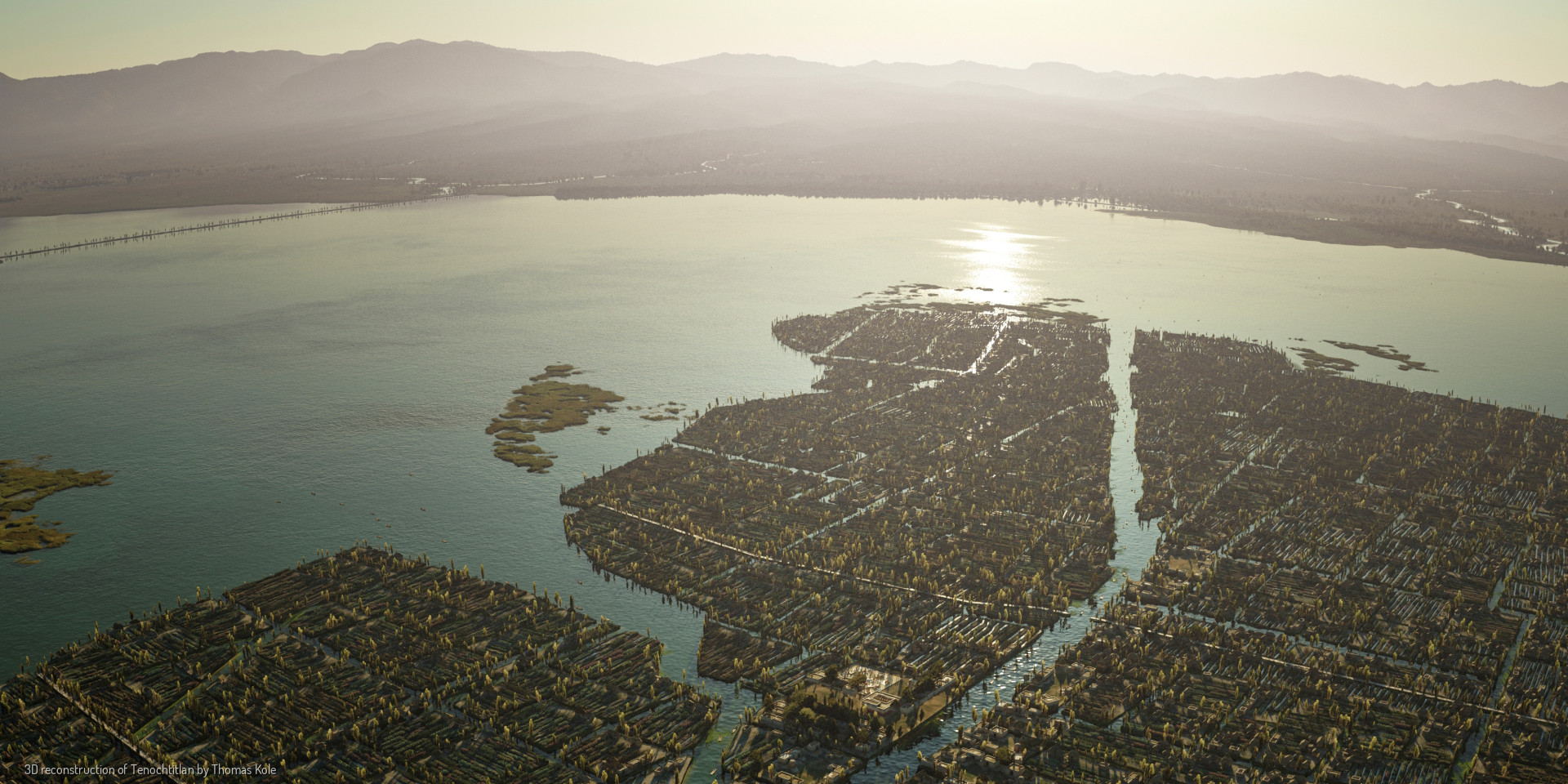Gastropod looks at food through the lens of science and history.
Co-hosts Cynthia Graber and Nicola Twilley serve up a brand new episode every two weeks.
Co-hosts Cynthia Graber and Nicola Twilley serve up a brand new episode every two weeks.
Slide the bar to compare past to present: left, a 3D reconstruction of the island of Tenochitlan-Tlatelolco in Lake Texcoco, circa 1518; right, Mexico City on the same site today. (Image credit: Tenochitlan reconstruction by Thomas Kole; Mexico City drone images by Andrés Semo Garcia, SemoDron)

David Carballo is professor of anthropology, archeology, and Latin American studies at Boston University. He is the author of, among other books, Collision of Worlds: A Deep History of the Fall of Aztec Mexico and the Forging of New Spain, and the editor of Teotihuacan: The World Beyond the City.
Luis Zambrano is a senior researcher at the Institute of Biology at the National Autonomous University of Mexico. His work to conserve axolotls in Mexico City's chinampas has been covered by National Geographic, The New York Times, and many other outlets.

Roxana Larrondo is the director of outreach at The Herdez Foundation, a museum, library, and institution dedicated to preserving and furthering Mexico's gastronomy and culinary history. Monserrat Castillejo is a chef for the foundation; she and her colleagues prepared Cynthia and Nicky's delicious Aztec feast.
Left, a 3D reconstruction of the city of Tenochitlan, circa 1518, with the Templo Mayor, the primary holy site of the Aztec capital in the center; right, this spot in Mexico City today, with the Mexico City Metropolitan Cathedral where the temple once stood. (Image credit: Tenochitlan reconstruction by Thomas Kole; Mexico City drone images by Andrés Semo Garcia, SemoDron)
Joahna Hernandez is the director of marketing at Arca Tierra, a regenerative agriculture and local tourism group focused on restoring the chinampas of Xochimilco.
Rodrigo Pérez Ortega is an award-winning, bilingual science journalist based in Mexico City, and we couldn't have reported this episode without his help. Find more of his writing from Science Magazine, The New York Times, Quanta, and elsewhere on his website.
Our thanks to Patricia Acosta, a Spanish-English translator based in Somerville, MA, and María Mónica Ruiz, a specialist in sustainability and sustainable tourism based in Bogotá, Colombia, who helped with voiceover work this episode.
As we mentioned in the episode, we're planning for the future of Gastropod and we want to hear from you to figure out how we can make our show better—plus, the information you provide will help us keep the show running. It’ll take you almost no time, just visit voxmedia.com/survey to give us your feedback.
This episode of Gastropod was supported by a generous grant from the Alfred P. Sloan Foundation for the Public Understanding of Science, Technology, and Economics. Check out the other books, movies, shows, podcasts, and more that they support here.
Some of you may already know that the last independent ruler of the Aztec empire's name is transcribed as Moctezuma in Mexico. Apparently Motecuhzoma or Moteuctzoma are even closer to the original Nahuatl. So why is he known as Montezuma among English speakers? According to historian and Nahuatl scholar John F. Shwaller, "in English, we ended up with a slight variant which contains what linguists call an intrusive 'n;' that’s when people add the 'n' sound to a word where is doesn’t really exist. It is found in English words like messenger, one who carries a message." In short, among English-speakers, Montezuma is more commonly understood, but, if you do manage to time-travel back to one of his feasts, maybe stick with Motecuhzoma...
Click here for a transcript of the show. Please note that the transcript is provided as a courtesy and may contain errors.